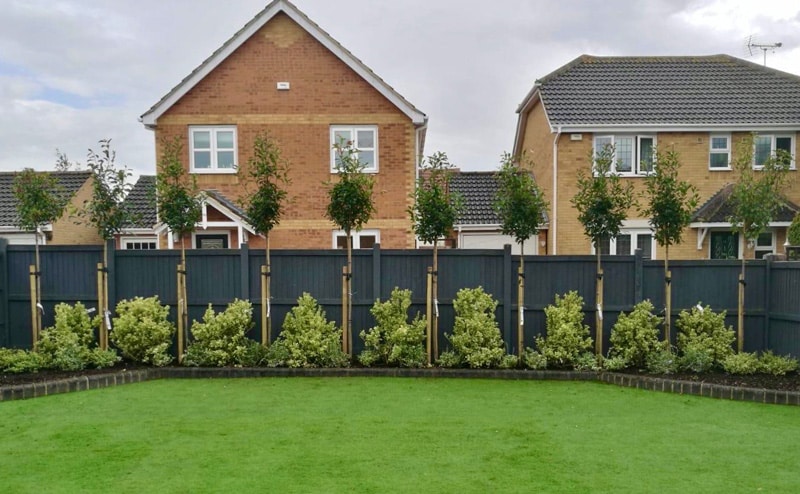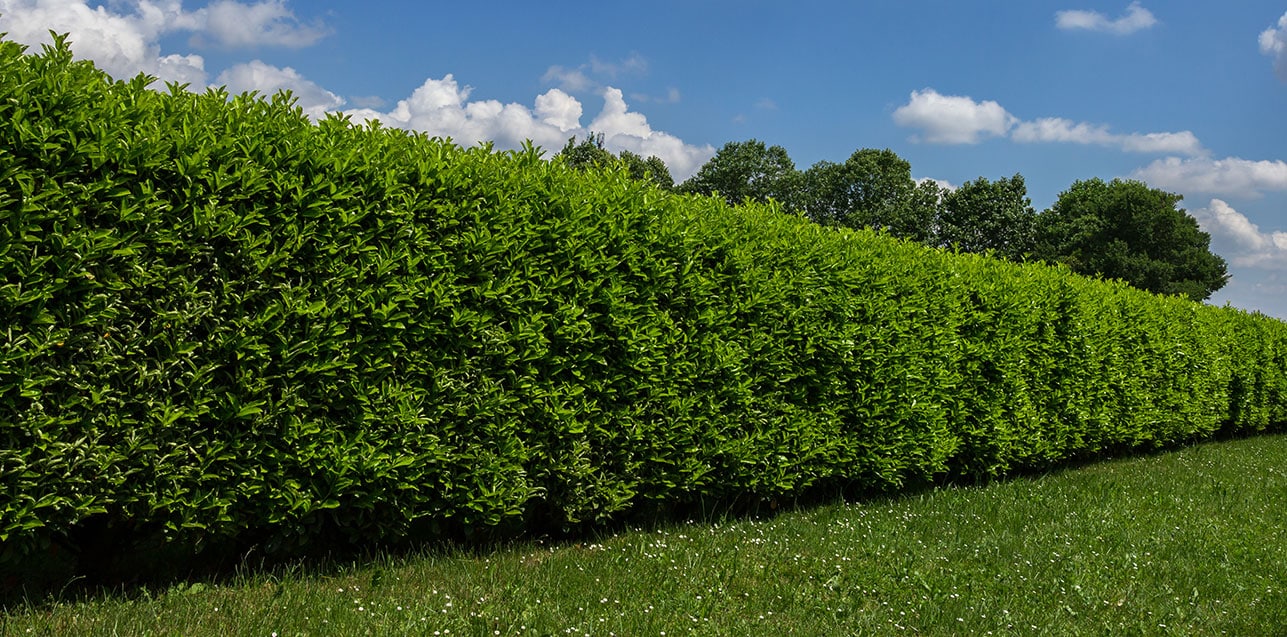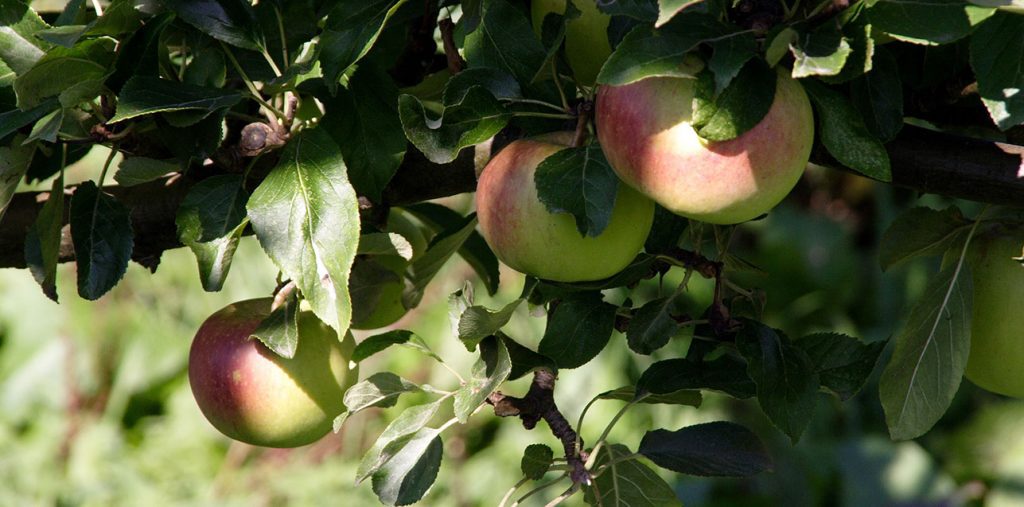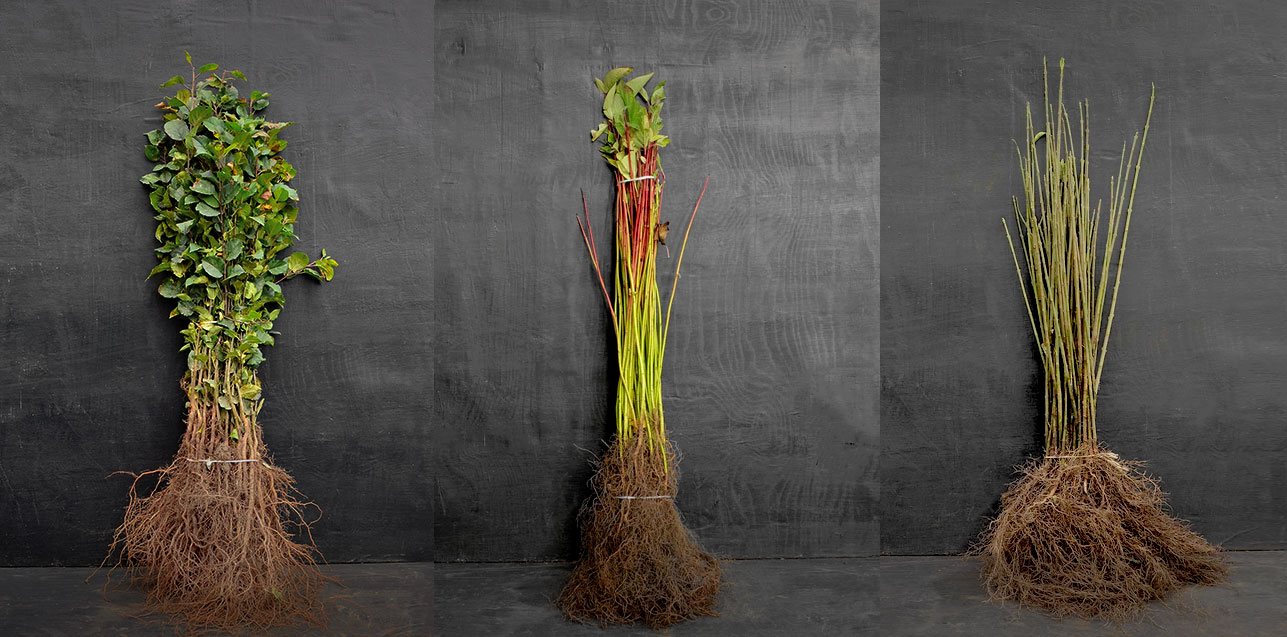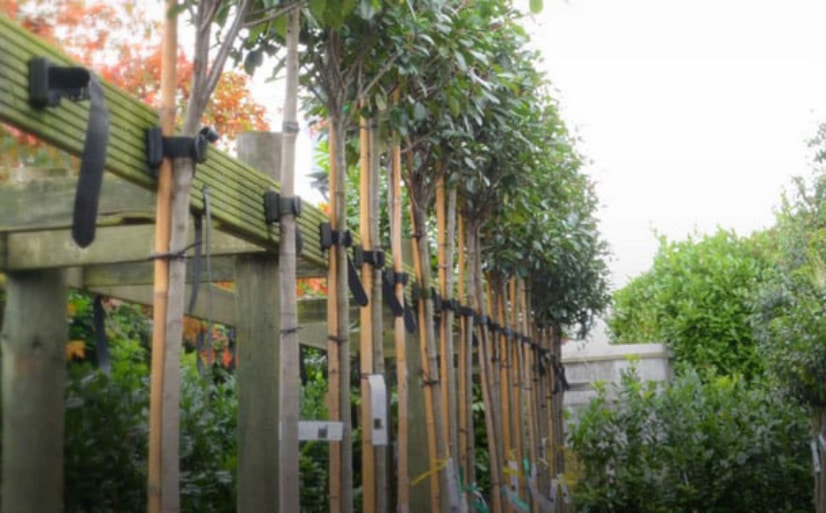In this expert guide to Photinia Red Robin we will delve into the fascinating history of this popular evergreen shrub. Explore its distinctive visual characteristics, and outline its wide range of uses in landscaping and gardens.
Introduction
Photinia is a fascinating genus made up of approximately 50 to 60 species of small trees and shrubs. Characterised by their predominantly evergreen nature and consistently glossy leaves, they are a popular choice for many landscapes. While the name Photinia is now commonly used, it’s interesting to note that they were historically often referred to as ‘Christmas berry’.
In the UK, the ‘Red Robin’ variety is one of the most common plants in the UK. Often seen as a large shrub, hedging plant or small tree, it’s remarkable how popular Photinia ‘Red Robin’ has become. However, it’s no surprise that the ‘Red Robin’ has achieved widespread popularity and recognition from the RHS Award of Garden Merit. This Photinia variety has numerous benefits that make it an excellent selection for various landscaping designs. Its versatility is also notable, as it flourishes in diverse climates worldwide, ranging from the temperate conditions of the UK to the tropical environment of Bali.
History of Photinia
The Greek word for shiny is “photeinos,” and it is believed that this refers to the glossy appearance of the Photinia’s leaves. Additionally, the Photinia genus originates from parts of Asia and North America that typically experience a temperate climate. It is also classified as belonging to the Rosaceae family.
Photinia x Fraseri is a cross between Photinia serrulata and Photinia glabra, and it originates from the renowned Fraser nursery in Alabama, USA. Interestingly, the hybrid “Red Robin” originates from a grower in New Zealand. It’s unlikely they could have predicted just how popular it would become over the past two decades. Its rise to prominence was significantly helped by appearances at prestigious events like the RHS Chelsea Flower Show, as well as similar shows at Hampton Court and Tatton.
Latterly, some of the larger nurseries in the Mediterranean region have successfully produced ‘Red Robin’ in stunning topiary shapes. This has highlighted the plant’s adaptability. Upon its introduction to the UK market, there were initial concerns regarding the hardiness of Photinia Red Robin, particularly in more northern areas. However, aside from occasional late frost damage that eventually disappears, ‘Red Robin’ has proved remarkably tough and demonstrated remarkable resilience.
Interestingly, the International Society for Horticultural Science conducted detailed tests on Photinia ‘Red Robin’ concerning its adaptability to water stress. Comparing it with other well-known shrubs, they discovered that this plant exhibits a higher level of adaptability when water availability is reduced.
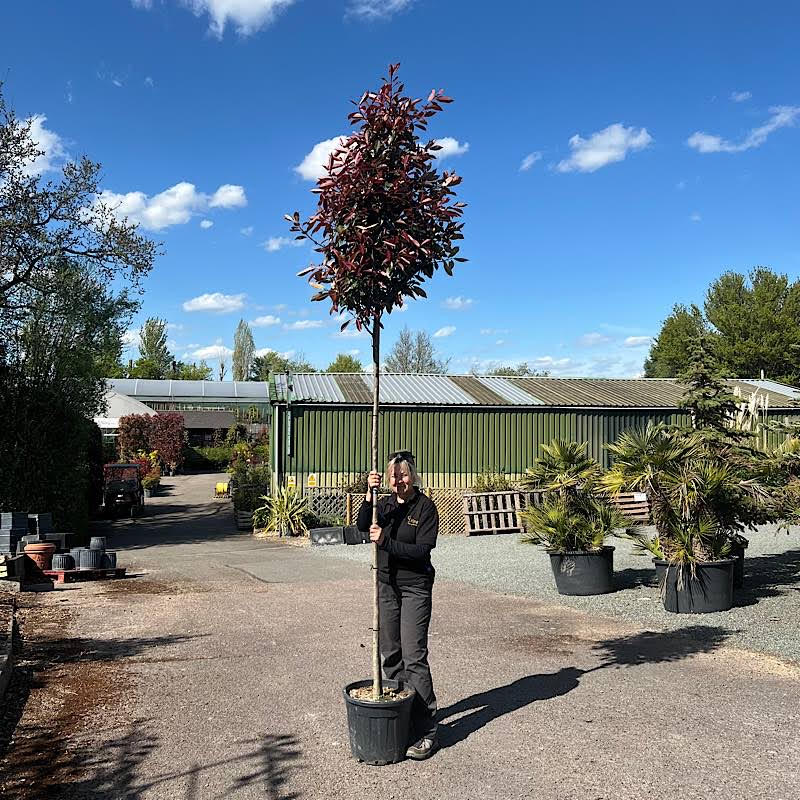
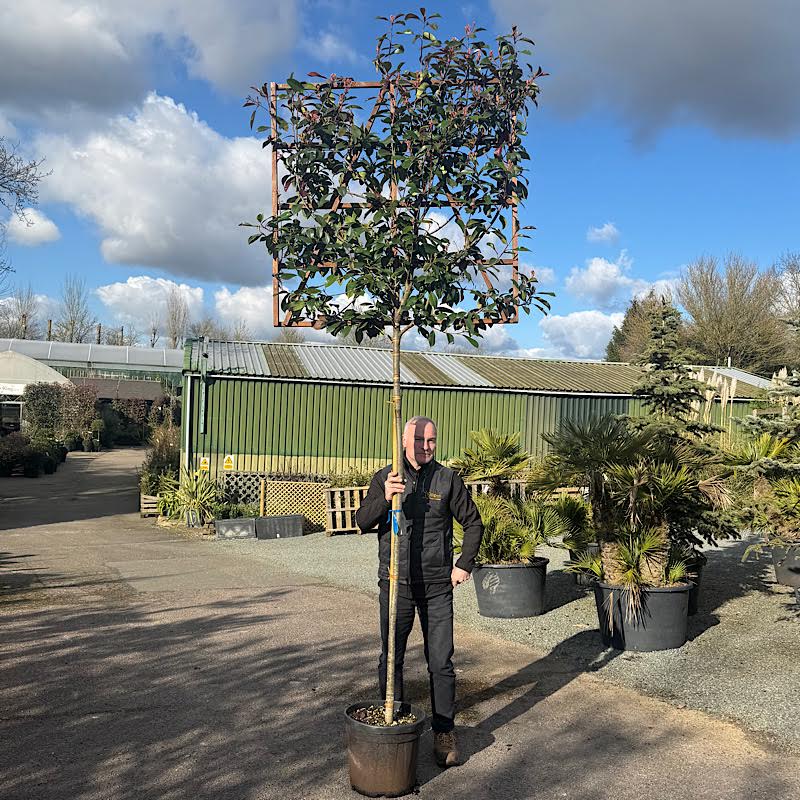
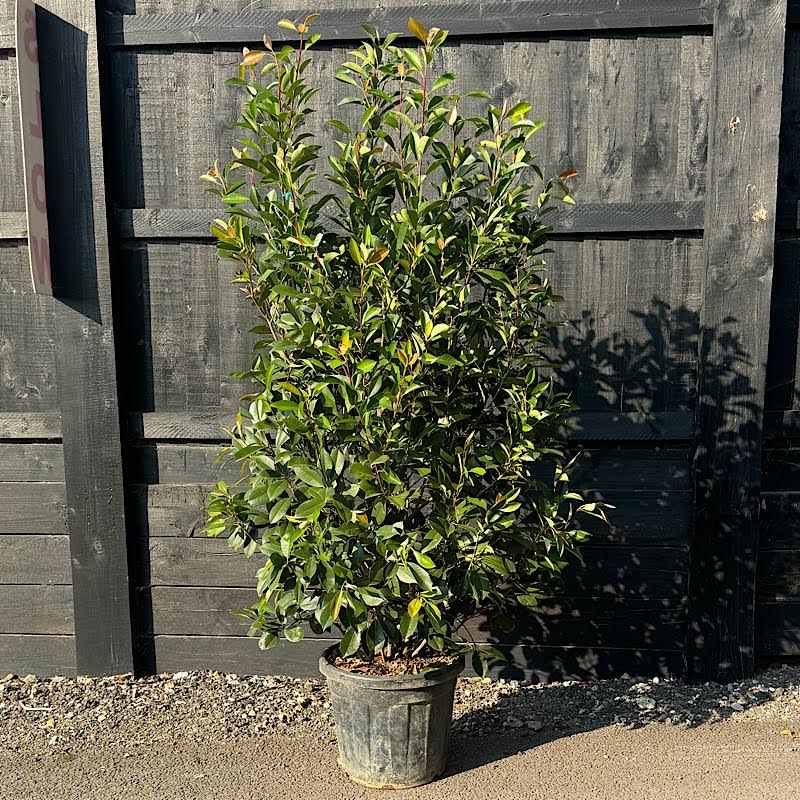
Photinia Screening Trees (Standard and Pleached)
When grown in standard form Photinia screening trees usually have a 1.8-2m clear stem and a bushy head of foliage. While the current head is approximately 1m+/-, it will mature to an additional 2m+. When planted at 1.2-1.5m intervals, a continuous row of Photinia will form a dense, evergreen screen elevated above the fence line. These trees feature a shallow, fibrous root system, which allows them to be planted relatively close to buildings and makes them suitable for gardens of all sizes.
Similar to our standard trees, our pleached trees also feature a clear stem ranging from 1.8 to 2m. The key difference lies in their head of foliage, which has been trained onto a 1.2 x 1.2m framework. This training results in a more instant screening effect as the trees have a wider and flatter shape right from the start. Pleached trees are an excellent choice for those seeking a more formal aesthetic compared to the naturally grown shapes of standard trees.


Photinia Hedging Plants
With shiny leaves that flush bright red in spring, Photinia can be planted in a row to form a tight evergreen hedge up to 4-4.5m tall. For a dense and formal look, we recommend pruning them twice a year, hedge-cutters can also be used to obtain an almost solid wall of leaf! When grown into a mature hedge, Photinia is very tough and will tolerate any amount of football, tennis or cricket activities. As it is totally bereft of prickles it will not cause injury where children are concerned either.
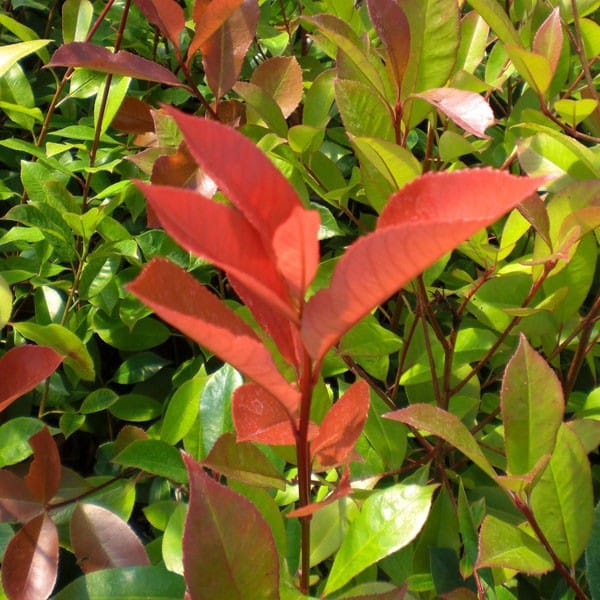
While Photinia ‘Red Robin’ is a fantastic choice for clearly defining garden boundaries, its uses extend much further. In larger gardens, Photinia Red Robin makes a stunning specimen shrub, offering vibrant colour and interest. It also integrates beautifully into shrub borders in smaller gardens, providing valuable structure and visual appeal. Photinia is an adaptable plant tolerant of a wide range of soil conditions, and will even thrive in partial shade. Unlike an increasingly large list of evergreen species available throughout Europe, it does not suffer from any significant diseases either. As a result of these excellent qualities, ‘Red Robin’ has become one of the most popular plants sold in nurseries and garden centres across the UK.
Hopefully this expert guide to Photinia was insightful and gave you some inspiration on how Photinia trees and hedging can enhance your garden. Should you have any further questions, please don’t hesitate to get in touch. We are always happy to offer advice!
Further reading:
Photinia Trees and Hedging: Discover Our Number 1 Screening Tree!
How to Grow Photinia: Royal Horticultural Society (RHS) Guide

